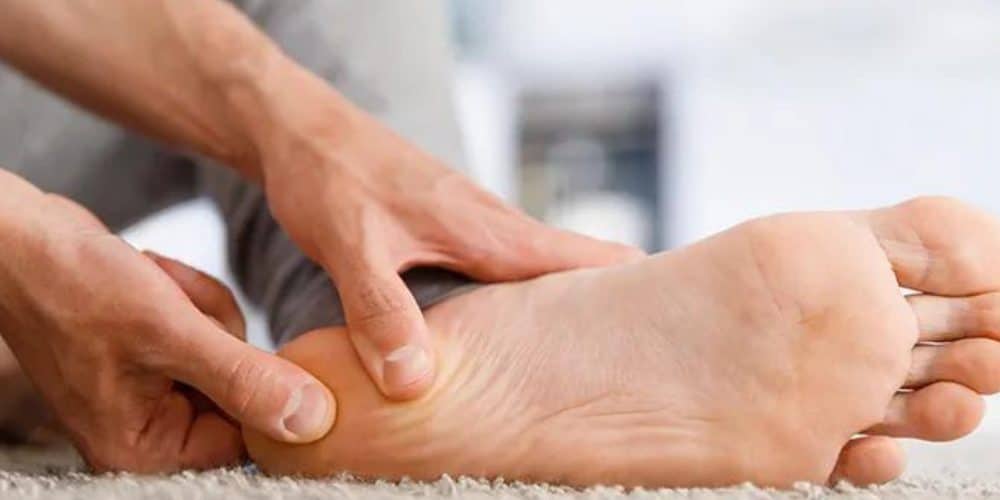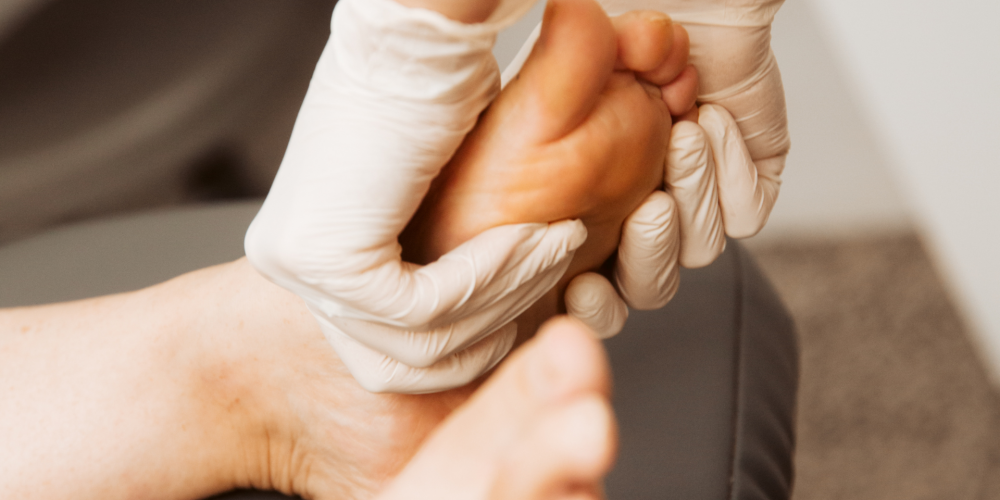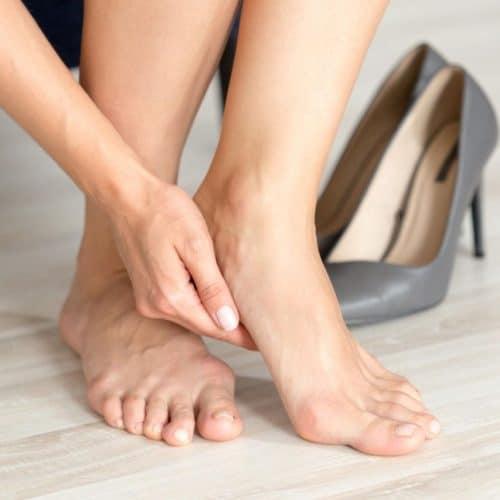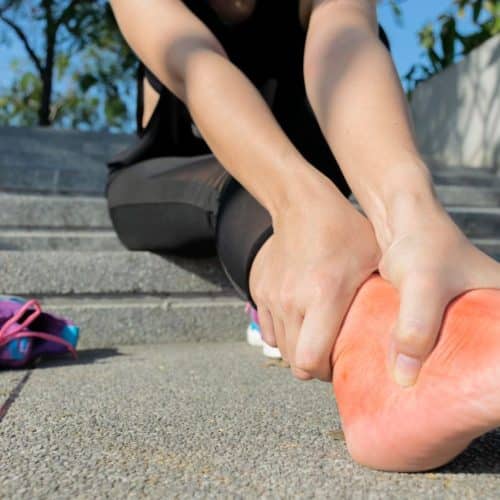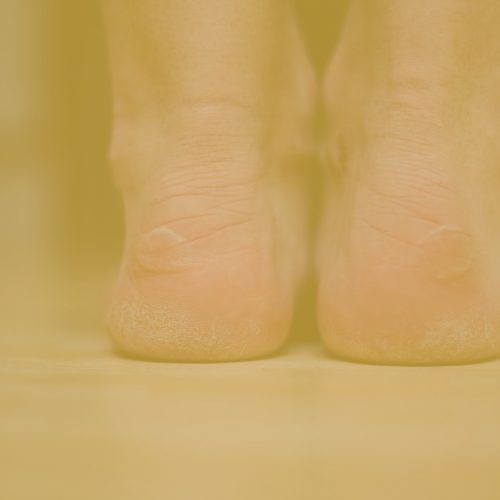Are you tired of the persistent discomfort that comes with every step? The throbbing agony in your feet, a constant reminder of your struggle with plantar fasciitis? If you’ve been yearning for relief, you’re not alone. Plantar fasciitis can be a formidable adversary, challenging even the simplest activities. But fear not, for there’s a potential solution that might just change your world – orthotics. These unassuming inserts have garnered attention as a beacon of hope for foot pain sufferers. Could they be the remedy you’ve been searching for?
Orthotics, those hidden devices designed to provide support, correction, and relief, have emerged as a ray of optimism for those grappling with the torment of plantar fasciitis. Imagine slipping into your shoes, feeling cushioning, and a customised embrace that nurtures your aching feet. These marvels of ergonomic design have the potential to realign, redistribute pressure, and cradle your feet, allowing the inflamed plantar fascia to heal gradually. With orthotics, you’re not merely walking; you’re embarking on a journey towards healing.
Understanding Plantar Fasciitis
Plantar fasciitis is a foot ailment that affects a substantial number of people all over the world. This illness may be rather debilitating for those who suffer from it. Inflammation of the plantar fascia, a key ligament-like tissue that runs down the bottom of the foot, linking the heel bone to the toes, is the primary symptom of this ailment. This condition can also affect the arch of the foot. The plantar fascia is an important structural component of the foot, as it helps to support the arch of the foot and acts as a shock absorber during movements such as walking, jogging, and standing.
A sensation described as being “sharp and stabbing” and originating in the bottom of the heel is typical of plantar fasciitis. This soreness is generally at its worst when you get out of bed for the first time in the morning or after being inactive for an extended time. When you begin to walk, the plantar fascia is subjected to strain, resulting in microscopic tears and, eventually, inflammation. This inflammatory reaction causes the typical discomfort in the heel, which may make even the most routine of everyday chores a difficult and uncomfortable experience.
There are a number of things that can play a role in the development of plantar fasciitis. One of the most prevalent causes is an excessive strain placed on the plantar fascia as a result of extended standing, walking, or jogging on hard surfaces. In addition, the chance of acquiring this illness can be increased by variables such as being overweight, wearing inappropriate footwear, having high arches or flat feet, or having incorrect gait mechanics.
It is important to keep in mind that while plantar fasciitis most often manifests itself in the region of the heel, the pain can also spread over the arch of the foot. This pain might make it difficult for you to move about, disrupt your normal routine, and even have an influence on your quality of life in general.
It is imperative that you consult a qualified healthcare practitioner if you have any reason to believe that you may be suffering from plantar fasciitis. A reliable diagnosis of the problem can be reached by a healthcare practitioner, such as a podiatrist, through a physical examination and, if required, imaging testing. Early intervention and the use of proper treatment measures might play a crucial part in halting the progression of the ailment and assisting you in locating some relief from the ongoing discomfort.
The Role of Orthotics
The use of orthotics, which are often referred to as orthotic insoles or shoe inserts, is an extremely important component in the process of controlling plantar fasciitis and reducing the accompanying pain. These customised devices are created with the intention of providing focused support, improving overall comfort, and enhancing foot biomechanics. Let’s go into more detail about how orthotics function and the many advantages associated with using them.
1. Support and Alignment
One of the primary functions of orthotics is to support the arches of your feet. The arches are vital in distributing your body weight evenly across your feet and absorbing the shock generated during movement. In cases of plantar fasciitis, the arches may not be adequately supported, leading to excessive strain on the plantar fascia.
Orthotics are engineered to offer varying degrees of arch support, depending on the individual’s foot structure and needs. By providing the right support, orthotics help alleviate the strain on the plantar fascia, reducing inflammation and pain. Moreover, they contribute to improved overall foot alignment, which has a positive ripple effect on your body’s posture and alignment.
2. Biomechanical Correction
There is a correlation between biomechanical foot movement and gait abnormalities and the development of plantar fasciitis in many patients. Orthotics are able to treat these problems because of their ability to rectify biomechanical abnormalities. For instance, those who have flat feet or severe pronation (an inward rolling of the foot) may benefit from orthotics that give motion control. These individuals may also benefit from corrective insoles. Overpronation, which places excessive stress on the plantar fascia and can contribute to plantar fasciitis, can be prevented with these orthotics.
On the other hand, those who have high arches may need to wear orthotics since they require more padding and shock absorption than average. These orthotics serve to reduce the force that is exerted on the plantar fascia as a result of the impact that is caused when the foot contacts the ground.
3. Cushioning and Shock Absorption
The cushioning properties of orthotics play a significant role in managing plantar fasciitis pain. With each step you take, your feet absorb the impact of your body weight against the ground. For individuals with plantar fasciitis, this impact can exacerbate inflammation and discomfort. Orthotics with cushioning capabilities absorb and distribute the shock, minimising the stress on the plantar fascia.
4. Improved Comfort and Mobility
Orthotics enhance overall comfort and mobility by providing targeted support and addressing biomechanical issues. Individuals with plantar fasciitis often experience relief from pain and discomfort when using orthotics. This improved comfort enables them to carry out daily activities more easily, from walking and standing to engaging in physical activities.
5. Customisation Options
Orthotics are available in a wide variety of forms, including off-the-shelf (over-the-counter) alternatives and inserts that are created specifically for the patient. A comprehensive analysis of your foot anatomy, walking pattern, and unique requirements serves as the basis for the construction of individualised orthotics. This individualised approach guarantees that the orthotics are customised to address the specific difficulties that are unique to you and give the highest possible level of support.
Types of Orthotics
Orthotics come in a variety of types, each tailored to address specific foot conditions and provide customised support. Understanding the distinctions between these types can help you make an informed decision when selecting orthotics for your plantar fasciitis. Let’s explore the different categories of orthotics:
1. Rigid Orthotics
Rigid orthotics are devices that are designed to reduce the amount of excessive not normal foot motion that is produced by the wearer. Rigid orthotics are also known as functional orthotics. People who have foot conditions such as overpronation or flat feet, in which the foot rolls excessively inward when walking or running, are the ones who stand to profit the most from wearing these kinds of shoes. To prevent the foot from rolling inward too much and causing overpronation, these orthotics are made from materials such as plastic or carbon fibre, providing the foot with a significant amount of support.
These orthotics have been thoughtfully crafted to improve the alignment of the foot, which in turn redistributes pressure and strain away from the plantar fascia. Rigid orthotics efficiently treat the underlying causes of plantar fasciitis by reducing stress on the ligaments, tendons, and muscles. This is accomplished by the regulation of foot mobility provided by the orthotics.
2. Soft Orthotics
Cushioning and shock absorption are the top priorities of soft orthotics. They are a fantastic option for anyone who wants more comfort and support owing to conditions such as arthritis or feet that are very sensitive. These types of orthotics are often made out of more pliable materials, such as EVA, which create a cushioning effect similar to that of mild padding under the feet.
Soft orthotics provide cushioning features that serve to lessen the impact that happens with each step; this is something that may be very useful for persons who suffer from plantar fasciitis. By easing the strain placed on the plantar fascia, soft orthotics provide a significant contribution to the reduction of discomfort and improvement of comfort experienced during routine activities.
3. Semi-Rigid Orthotics
Support and cushioning are provided by semi-rigid orthotics, making them a flexible choice that can accommodate a wide range of foot ailments and kinds. These orthotics are often constructed with layers of both hard and cushioning materials since they are made from a variety of materials throughout the manufacturing process. The end product is an orthotic that provides shock absorption while also giving a considerable amount of motion control.
Individuals whose foot arches and alignment degrees change the most are the best candidates for semi-rigid orthotics. They efficiently treat plantar fasciitis and boost general foot comfort while providing the benefits of both stiff and soft orthotics.
4. Custom vs. Over-the-Counter (OTC) Orthotics
Orthotics are available in both custom-made and over-the-counter (OTC) options. Custom orthotics are tailored to your foot structure, gait, and condition. A healthcare practitioner takes detailed measurements and assessments to create orthotics that precisely address your individual needs. These orthotics offer a higher level of personalisation and are particularly effective for complex cases of plantar fasciitis.
OTC orthotics, on the other hand, are pre-made and available in various sizes and arch types. While they are not as personalised as custom orthotics, they can still provide relief for milder cases of plantar fasciitis. It’s important to note that OTC orthotics may not offer the same targeted support as custom options.
Finding the Right Orthotics
Choosing the right orthotics for your plantar fasciitis is a crucial step in effectively managing your condition and finding relief from persistent foot pain. With various types and options available, making an informed decision that aligns with your needs is important. Here’s a comprehensive guide to help you navigate the process of selecting the right orthotics:
1. Professional Guidance
The journey begins with seeking professional guidance from a podiatrist, orthopedic specialist, or other qualified healthcare practitioners. These experts possess the knowledge and experience to assess your condition and foot structure. Through physical examination, gait analysis, and imaging tests, they can determine the underlying causes of your plantar fasciitis and recommend suitable orthotic solutions.
2. Proper Fit and Comfort
Whether you choose custom or OTC orthotics, ensuring a proper fit is essential. Ill-fitting orthotics can lead to discomfort and may exacerbate your condition. Your healthcare practitioner will take accurate measurements and make necessary adjustments to ensure your orthotics fit comfortably within your footwear.
3. Integration into Lifestyle
Consider your lifestyle and daily activities when selecting orthotics. If you’re an athlete, orthotics that offer motion control and shock absorption can enhance your performance and reduce strain on the plantar fascia. For individuals with a more sedentary lifestyle, cushioning and support might take precedence.
4. Regular Follow-up
After obtaining your orthotics, schedule follow-up appointments with your podiatrist. This allows them to assess how well the orthotics work for you and make any necessary adjustments. Orthotics may need periodic modifications to ensure they continue to provide the best possible support.
Finding the right orthotics involves a collaborative effort between you and your podiatrist. By seeking professional guidance, considering your specific needs, and ensuring proper fit and comfort, you can make an informed decision that sets you on the path to managing your plantar fasciitis and experiencing relief from foot pain.
Incorporating Orthotics into Your Routine
Once you’ve obtained the appropriate orthotics for your plantar fasciitis, the journey towards comfort and relief is underway. However, effectively incorporating orthotics into your daily routine is key to experiencing their full benefits. Here’s a comprehensive guide on how to seamlessly integrate orthotics into your lifestyle:
1. Gradual Introduction
As with any new addition to your routine, it’s important to introduce orthotics gradually. Start by wearing them for short periods, such as an hour or two a day, especially during activities that don’t involve much physical exertion. This allows your feet to adjust to the new support and prevents any discomfort from sudden, prolonged use.
2. Proper Footwear
Orthotics work in synergy with your footwear. Choose shoes with removable insoles, providing the necessary space for your orthotics. Additionally, opt for shoes that offer adequate support and cushioning to complement the benefits of the orthotics. Your podiatrist can offer recommendations on the best types of shoes to pair with your orthotics.
3. Consistency is Key
For orthotics to be effective, consistency is key. Gradually increase the duration of wear as your feet become accustomed to them. Over time, aim to wear your orthotics throughout your waking hours, whether at work, engaging in physical activities, or simply going about your daily tasks. Consistent usage maximises their impact in providing relief and promoting healing.
4. Regular Stretching
While orthotics offer support and cushioning, incorporating regular foot stretches into your routine can further aid in managing plantar fasciitis. Gentle calf stretches and foot flexion exercises can help improve flexibility, reduce muscle tension, and enhance the overall effectiveness of orthotics.
5. Recommended Treatments
Orthotics work best when integrated into a comprehensive treatment plan. Your podiatrist may recommend additional strategies to manage your plantar fasciitis, such as ice therapy, anti-inflammatory medications, and physical therapy exercises. Following these recommendations in conjunction with wearing orthotics can expedite your recovery.
6. Listen to Your Body
Pay attention to your body’s signals as you incorporate orthotics into your routine. It’s normal to experience some discomfort during the adjustment period, but severe or persistent pain should not be ignored. Consult your podiatrist if you encounter discomfort that doesn’t improve over time. They can assess whether any adjustments are needed to ensure the orthotics are properly addressing your condition.
7. Maintenance and Replacement
Regularly inspect your orthotics for signs of wear and tear. Depending on the type of orthotics and the frequency of use, they may need replacement every six months to a year. Proper maintenance, such as cleaning and airing them out, can extend their lifespan.
Successfully integrating orthotics into your routine involves patience, consistency, and collaboration with your podiatrist. By gradually introducing orthotics, choosing appropriate footwear, maintaining consistency, and incorporating recommended treatments, you’re setting yourself up for a more comfortable and mobile life. Remember, each step you take with your orthotics brings you closer to managing plantar fasciitis and regaining the quality of life you deserve.
Conclusion
In conclusion, delving into the realm of orthotics for plantar fasciitis has shed light on effective solutions to alleviate foot pain. This blog has unravelled the intricate connection between plantar fasciitis and the discomfort it brings, offering valuable insights into the world of foot care. By now, you’re well aware of how orthotics can play a pivotal role in providing much-needed support and relief to those battling this condition.
But here’s the twist – we want to hear from you! Have you ever experienced the relentless agony of plantar fasciitis? Or perhaps you’ve successfully found solace through orthotic solutions? Share your experiences, tips, and questions in the comments section below. Let’s engage in a conversation that could help others find the comfort they seek and put an end to the persistent foot pain.
Remember, your journey could inspire and guide someone toward a life without the limitations of plantar fasciitis. So, don’t hesitate to be a part of the discussion now!
Content Summary
- Orthotics, those hidden devices designed to provide support, correction, and relief, have emerged as a ray of optimism for those grappling with the torment of plantar fasciitis.
- These marvels of ergonomic design have the potential to realign, redistribute pressure, and cradle your feet, allowing the inflamed plantar fascia to heal gradually.
- With orthotics, you’re not merely walking; you’re embarking on a journey towards healing.
- The realm of orthotics for plantar fasciitis is a labyrinth of options, each promising varying degrees of respite.
- Plantar fasciitis is a foot ailment that affects a substantial number of people all over the world.
- A sensation described as being “sharp and stabbing” and originating in the bottom of the heel is typical of plantar fasciitis.
- There are a number of things that can play a role in the development of plantar fasciitis.
- It is important to keep in mind that while plantar fasciitis most often manifests itself in the region of the heel, the pain can also spread over the arch of the foot.
- It is imperative that you consult a qualified healthcare practitioner if you have any reason to believe that you may be suffering from plantar fasciitis.
- The use of orthotics, which are often referred to as orthotic insoles or shoe inserts, is an extremely important component in the process of controlling plantar fasciitis and reducing the accompanying pain.
- One of the primary functions of orthotics is to support the arches of your feet.
- Orthotics are engineered to offer varying degrees of arch support, depending on the individual’s foot structure and needs.
- By providing the right support, orthotics help alleviate the strain on the plantar fascia, reducing inflammation and pain.
- There is a correlation between biomechanical foot movement and gait abnormalities and the development of plantar fasciitis in many patients.
- Orthotics are able to treat these problems because of their ability to rectify biomechanical abnormalities.
- The cushioning properties of orthotics play a significant role in managing plantar fasciitis pain.
- A comprehensive analysis of your foot anatomy, walking pattern, and unique requirements serves as the basis for the construction of individualised orthotics.
- Orthotics come in a variety of types, each tailored to address specific foot conditions and provide customised support.
- Understanding the distinctions between these types can help you make an informed decision when selecting orthotics for your plantar fasciitis.
- Support and cushioning are provided by semi-rigid orthotics, making them a flexible choice that can accommodate a wide range of foot ailments and kinds.
- Individuals whose foot arches and alignment degrees change the most are the best candidates for semi-rigid orthotics.
- They efficiently treat plantar fasciitis and boost general foot comfort while providing the benefits of both stiff and soft orthotics.
- Orthotics are available in both custom-made and over-the-counter (OTC) options.
- Custom orthotics are tailored to your foot structure, gait, and condition.
- Choosing the right orthotics for your plantar fasciitis is a crucial step in effectively managing your condition and finding relief from persistent foot pain.
- With various types and options available, making an informed decision that aligns with your needs is important.
- Whether you choose custom or OTC orthotics, ensuring a proper fit is essential.
- Consider your lifestyle and daily activities when selecting orthotics.
- After obtaining your orthotics, schedule follow-up appointments with your podiatrist.
- Finding the right orthotics involves a collaborative effort between you and your podiatrist.
- Once you’ve obtained the appropriate orthotics for your plantar fasciitis, the journey towards comfort and relief is underway.
- However, effectively incorporating orthotics into your daily routine is key to experiencing their full benefits.
- Orthotics work in synergy with your footwear.
- Choose shoes with removable insoles, providing the necessary space for your orthotics.
- For orthotics to be effective, consistency is key.
- Gradually increase the duration of wear as your feet become accustomed to them.
- While orthotics offer support and cushioning, incorporating regular foot stretches into your routine can further aid in managing plantar fasciitis.
- Gentle calf stretches and foot flexion exercises can help improve flexibility, reduce muscle tension, and enhance the overall effectiveness of orthotics.
- Orthotics work best when integrated into a comprehensive treatment plan.
- Following these recommendations in conjunction with wearing orthotics can expedite your recovery.
- Pay attention to your body’s signals as you incorporate orthotics into your routine.
- It’s normal to experience some discomfort during the adjustment period, but severe or persistent pain should not be ignored.
- Consult your podiatrist if you encounter discomfort that doesn’t improve over time.
- Regularly inspect your orthotics for signs of wear and tear.
- Depending on the type of orthotics and the frequency of use, they may need replacement every six months to a year.
- Successfully integrating orthotics into your routine involves patience, consistency, and collaboration with your podiatrist.
- Remember, each step you take with your orthotics brings you closer to managing plantar fasciitis and regaining the quality of life you deserve.
- In conclusion, delving into the realm of orthotics for plantar fasciitis has shed light on effective solutions to alleviate foot pain.
- This blog has unravelled the intricate connection between plantar fasciitis and the discomfort it brings, offering valuable insights into the world of foot care.
- By now, you’re well aware of how orthotics can play a pivotal role in providing much-needed support and relief to those battling this condition.
- Let’s engage in a conversation that could help others find the comfort they seek and put an end to the persistent foot pain.
- Remember, your journey could inspire and guide someone toward a life without the limitations of plantar fasciitis.
FAQs (Frequently Asked Questions)
1. Can I buy orthotics without a prescription?
Yes, you can find over-the-counter orthotics, but consulting a specialist is recommended for personalised and optimal results.
2. How long does it take for orthotics to work?
It varies, but most people experience relief within a few weeks of consistent use.
3. Can I use orthotics in any type of shoes?
Certain shoes may be more compatible with orthotics, so it’s wise to consult your podiatrist about suitable footwear.
4. Are there any side effects of using orthotics?
When properly fitted, orthotics typically have no adverse effects. However, poorly fitting orthotics can cause discomfort.
5. Can I continue athletic activities with orthotics?
Yes, orthotics can enhance your athletic performance by providing better support and alignment.



